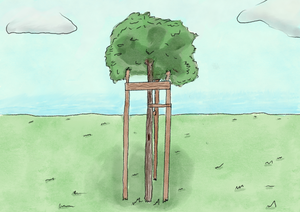
7.1 Family support paves recovery
Did you know that 1 in 4 people will step up as a caregiver for a loved one at some point in their lives?

7.1 Family support paves recovery
Did you know that 1 in 4 people will step up as a caregiver for a loved one at some point in their lives?
Among young individuals, mental health challenges are a leading reason for needing support, with 90% receiving care for these conditions.
Caring for a loved one with schizophrenia can be challenging, and many family members often feel overwhelmed by the weight of this responsibility. Schizophrenia and substance use disorder (SUD) often go hand in hand, sharing genetic and neurobiological factors.
The comorbidity of schizophrenia and substance use disorders is not an exception – it’s rather a common reality.
The essential role of family
When schizophrenia and substance use disorder (SUD) intersect, the complexity of managing both conditions increases, making it difficult for individuals to get the right care.
This “collision of complexity” often leads to poorer health outcomes, especially for those dealing with severe and long-term mental illnesses.
That’s why support and understanding from loved ones are vital at every stage. Family and friends play a crucial role in walking this journey alongside individuals with schizophrenia and SUD, helping them find stability and hope.
Even when a loved one seems uncooperative or lacks insight, it doesn’t mean progress is impossible. Consistent CARE AND COMPASSION TRULY MAKE A DIFFERENCE, bringing both healing and hope.
Reframing addiction: a treatable brain disorder
For much of history, substance use disorder was misrepresented, often viewed as a moral failing rather than a medical condition. Those struggling were unfairly labeled with terms like “addict,” reinforcing stigma and shame.
Thanks to advances in neuroscience, we now understand that substance use disorder is a complex brain disorder.
Substance use disorders (SUDs) are closely linked creating a twoway relationship: people with mental health conditions may turn to drugs and using substances can increase the likelihood of developing mental health disorders.
This occurs because substances affect the same brain circuits involved in mental health regulation.
Although SUD is a chronic, progressive illness that can lead to relapses, the most important fact is that it is treatable.
New advances in treatment
Recent studies offer hope. In an observational study, scientists followed individuals with schizophrenia who also struggled with cocaine addiction. Each patient received tailored antipsychotic treatment based on their needs. The study included people who were either actively using cocaine or had done so within the past three months.
The results were encouraging:
Nearly 60% EITHER STOPPED USING (cca half of patients) or SIGNIFICANTLY REDUCED THEIR USE.
70% showed improvements in symptoms and overall behavior.
These findings show the potential of comprehensive, consistent treatment to help individuals regain control of their lives.
Recovery is possible, and with the right support, long-term healing becomes an achievable reality.